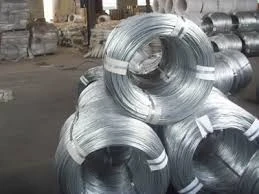Understanding the Factors Influencing the Expenses of Chain Link Installation for Your Property
Understanding Chain Link Installation Costs
When it comes to fencing options, chain link fencing is one of the most popular choices due to its durability, security, and cost-effectiveness. However, understanding the installation costs associated with chain link fencing is crucial before embarking on a fencing project. This article will break down the factors influencing the installation costs of chain link fences and provide a comprehensive overview for potential buyers.
Factors Affecting Chain Link Installation Costs
1. Material Costs The first component to consider is the cost of materials. Chain link fencing is made from galvanized steel, which is known for its strength and resistance to rust. Pricing can vary based on the gauge of the steel, with thicker gauges offering more durability but at a higher price. Additionally, there are various coatings available, such as vinyl or powder coating, which can add to the cost but improve the aesthetic appeal and longevity of the fence.
2. Fence Height The height of the chain link fence also significantly affects the overall cost. Standard heights range from 3 to 12 feet. Generally, the taller the fence, the more materials are required, which increases the price. For instance, residential properties may only require a 4 to 6-foot fence, while commercial properties might need upwards of 8 feet or more for added security.
3. Linear Feet of Fencing The length of the fence necessary for your project is a critical cost factor. The total linear footage will dictate the amount of materials needed. It is essential to measure the perimeter accurately to avoid overspending on unnecessary material or underestimating your needs, which could lead to additional costs in further purchasing.
chain link installation cost

4. Labor Costs Labor represents a significant portion of the installation cost. Hiring professionals can guarantee quality installation and compliance with local regulations but may also cost more. Labor costs can vary based on geographic location, the complexity of the installation, and the contractor’s experience. Some homeowners may choose to undertake the project themselves to save on labor costs, but this requires knowledge of installation techniques and the tools needed for the job.
5. Preparation and Site Conditions The condition of the installation site can also impact costs. If the area is heavily wooded, rocky, or uneven, additional site preparation may be necessary, which can lead to higher costs. Clearing the area of obstacles or grading the land may require extra labor and equipment, adding to the overall expense.
6. Permits and Regulations Local ordinances may require permits for fence installation, particularly in residential areas. The cost of permits, as well as potential setbacks that may influence the placement of the fence, should be factored into the overall budget. Always check with local zoning laws and homeowners' associations to ensure compliance and avoid future financial penalties.
Conclusion
In summary, while chain link fencing can be an economical and functional solution for property boundaries and security, the installation costs can vary significantly based on various factors. Material quality, fence height, total linear footage, labor rates, site conditions, and necessary permits all contribute to the overall expenditure. Homeowners should take time to assess their needs, gather multiple quotes from contractors, and consider DIY options if feasible. By doing thorough research and planning, you can make an informed decision that meets both your budget and fencing needs effectively.
-
Weather Resistance of Woven Wire and Chicken Wire Fencing MaterialsNewsJun.05,2025
-
Umbrella Nails Innovations in Roofing Fasteners for Wind ResistanceNewsJun.05,2025
-
Modern Barbed Wire Fence Designs for Perimeter ProtectionNewsJun.05,2025
-
How Iron Nail Wire Enhances Nail Strength and Installation EfficiencyNewsJun.05,2025
-
High-Security Razor Fence Solutions for Perimeter ProtectionNewsJun.05,2025
-
Durable Wire Netting Fence Solutions for Animal EnclosuresNewsJun.05,2025




